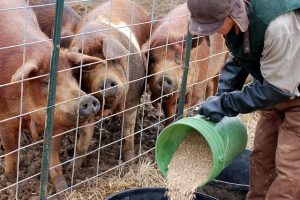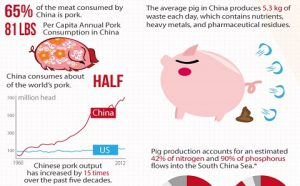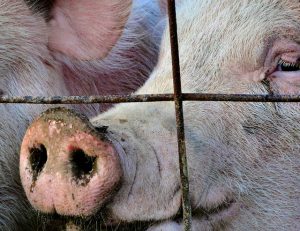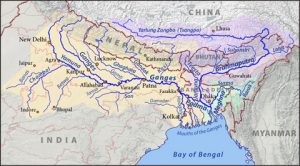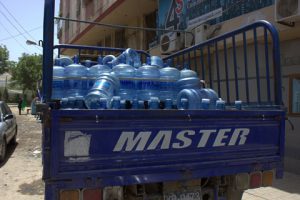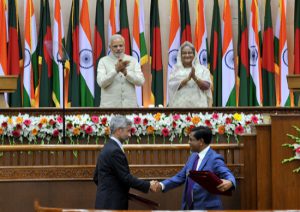Over-consumption of animal protein—especially beef—in North America, Europe and some Latin American countries is increasingly linked to a range of environmental crises both within and outside continental borders, such as drought, deforestation, soil erosion and climate change.
These factors, together with negative public health and social impacts of meat over-consumption, are also growing realities in China, mapping the rapid pace of economic development and raised living standards.
China recently lifted a three-year ban on beef imports from Brazil, put in place after a single case of Bovine Spongiform Encephalopathy (BSE, commonly known as the mad cow disease) was reported in Brazil.
As trade grows and the global food system continues to evolve, a clearer picture of the globalised livestock industry, characterised as a ‘meat triangle’ between industrialised producer-consumer countries (such as the US), emerging consumer countries (such as China), and resource-provider countries (including Brazil), is coming into focus.
China’s growing appetite for beef
Although pork remains the main type of meat in China, beef consumption is rising sharply. In 2014, China produced 6.9 million tonnes of beef (including veal) and imported another 417,000 tonnes, mainly from Australia, Uruguay, and New Zealand.
Recent projections estimate that by 2020, China’s beef imports will exceed 770,000 tonnes, growth of more than 50% in the next five years. In September 2014, the Chinese government announced a national policy of increasing imports of beef and lamb—both of which are more economically valuable than pork—to keep up with shifting consumption patterns in cities.
As demand for meat has grown in China, the country has become a net importer of soybeans, a major ingredient in animal feed. According to US Department of Agriculture (USDA) data, in 2014, China imported 73.5 million tonnes of soybeans, nearly six times its domestic production of 12.4 million tonnes.
The US and Brazil accounted for more than 85% of China’s soybean imports, with each supplying more than 30 million tonnes in 2014. The USDA estimates that China’s imports of soybeans will grow a further 45% over the next decade to 107.7 million tonnes, almost nine times domestic production levels.
The US model
In general, China is now following the production and consumption model of industrialised countries such the US, where 5% of livestock farms produce more than 50% of the meat supply in confined, concentrated, capital- and energy-intensive industrial production facilities.
Per capita meat consumption in the US is more than 100 kilogrammes a year, or about 300 grammes per day. In comparison, China consumes half as much meat on a per capita basis, around 150g per day. Although vastly different on a per person basis, consumption of meat in both countries is well above the healthy levels recommended by the World Health Organization.
Fueled by the expansion of western-style fast food outlets and supermarkets selling packaged meats, China has also started to adopt the model of industrial animal farming and processing adopted by the US after the Second World War. ‘Dragon head enterprises’, referring to the head of a vertically integrated production chain, benefit from government policy incentives to satisfy demand for plentiful and cheaper meat (a demand that is largely created, maintained and expanded by marketing efforts)—an increasing amount of which is likely to be supplied by Brazil and other countries in Latin America with large and politically powerful livestock sectors
Reopening the meat trade is part of a huge new trade package between China and Brazil, the centerpiece of which is the proposed transcontinental railroad project that will connect the Atlantic and Pacific oceans. The railroad is expected to speed up economic development in Brazil and Peru, as well as other Latin American countries.
Although the route of the railroad has not been decided and the technical and environmental impact assessments are yet to be carried out, the route is expected to run through the state of Mato Grosso, Brazil’s agro-industrial heartland, where large-scale cattle ranching and soybean plantations are concentrated. If it becomes operational, the railroad could greatly reduce the transportation costs for beef and soybean exports from Brazil.
For Brazil, this is an opportunity to make sizeable profits. However, destruction of rainforest to make way for low-efficiency cattle ranching and soybean cultivation has already resulted in the loss of much of the country’s “real gold”: freshwater resources, biodiversity, and the biomass of the Amazon and the Cerrado, the Brazilian savannah, which, in common with the Amazon, is also rich in flora and fauna.
Bountiful resources
These once-bountiful resources provide invaluable environmental benefit to the world, including local and regional climate regulation, carbon sequestration, soil fertilisation, and the prevention of erosion and desertification.
But their value, or the costs of losing it, are not adequately reflected in the price of agricultural products. To avoid further negative environmental impact, the direct and indirect effects of the trade of meat and feed between Brazil, China, the US and many other countries deserve careful study and consideration.
Meat overconsumption already poses significant challenges to many countries. Addressing this reality head on, in policy-making bodies and research institutions could bring a series of mutual benefits such as reduced pollution, climate change mitigation, healthier populations with lower health care expenses, higher food security, and ecological conservation and resilience.
Less meat, fewer emissions
The time has come to reconsider the relationship between human beings and animal products, with the future of a healthy, sustainable world in mind. The concept of “delegitimisation” has been discussed in the context of curbing fossil fuel consumption and smoking in public spaces (a shift China just made with a new ban on smoking in indoor public places recently instituted in Beijing).
Similarly, delegitimising overconsumption of meat has the potential to change the dominant model into a more sustainable one. For such a transition to succeed, policy support in all key countries is needed, such as suggested consumption levels, reduced subsidies for the meat and feed sectors, stricter environmental regulations with stronger enforcement, and convincing public education.
